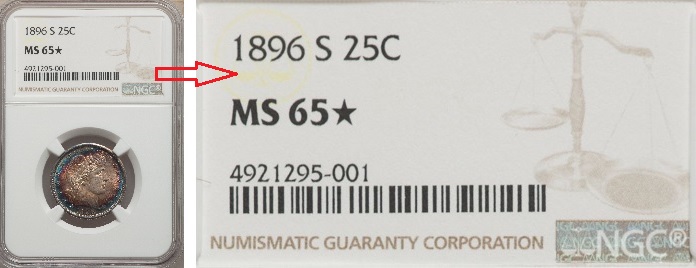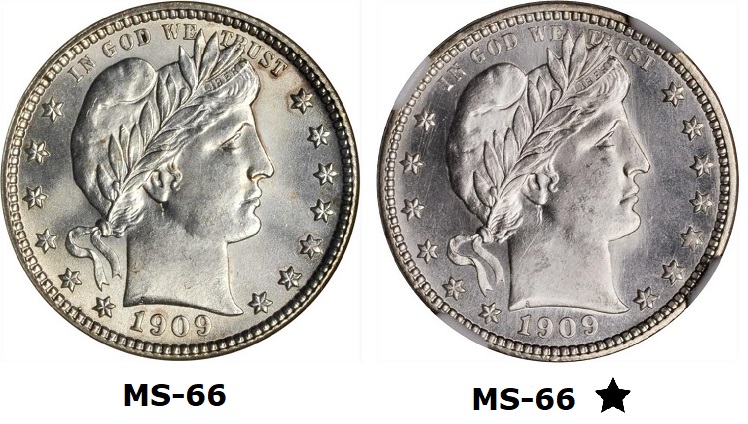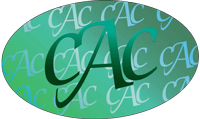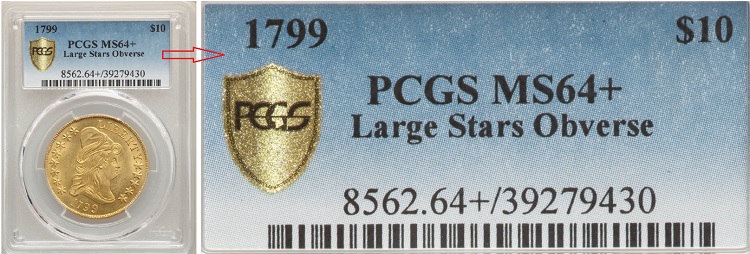Stars, "Green Beans", and "Plus" Grading
Back in the late 1960s, when I received my first blue Whitman album as a child and started seriously collecting coins, grading was so simple. There were just a few adjectival grades, mostly from Good to Uncirculated and Proof, and that was about the extent of it. Even a little kid like me could easily grasp the essentials.
As we discussed in the From Boogeyman to Super Hero chapter, marketplace conditions eventually forced coin grading to become more sophisticated and nuanced. Nowadays, coin price guides may list estimated values for dozens of grades for a single coin!
We have already touched upon the basics of grading Circulated, Mint State, and Proof coins. As seen even from an introductory level here on Rare Coins 101, there are many sideroads to travel before one reaches the destination of a being a well-rounded coin grader.
Yet, there is more. In response to the increasing need for greater specificity in grading, a few special indicators have been developed over the years to convey additional information above and beyond a given coin’s numerical grade and qualifiers (if any).
Dramatic price spikes over a point or two on the scale for many higher grade coins was a key motivator driving the development of these indicators, helping buyers and sellers to understand where within a single grade point quality range a given coin might fall.
For example, is an MS-64 more like an "average" MS-64 or is it getting really close to MS-65? A subtle difference to be sure, but crucial in many situations.
In this chapter, we discuss what these special indicators are...

A Star is Born
As they say, beauty is in the eye of the beholder. However, when it comes to eye appealing coins, most collectors have a few characteristics they like to see. These might include lively, colorful toning, original surfaces, or brilliant luster. For Proof coins, vivid Cameo contrast is a desirable trait.
A coin with exceptional eye appeal typically sells for more than an otherwise equal coin with less eye appeal. Sometimes, it sells for A LOT more.
We talked about the importance of eye appeal in previous chapters on coin grading, and now we're going to add a bit more about the subject.
The recognition of strong eye appeal has been around for
some time. In the early 2000’s, Numismatic
Guaranty Corporation (NGC) gave birth to the “Star” indicator. That is, they began awarding a “Star” to
coins having “exceptional” eye appeal for their assigned grade.
To earn the Star, NGC first requires a coin of full planchet integrity and without any distracting blemishes. If toned, it cannot be dark brown or black.
From there, if a coin is judged to possess appealing qualities that make the coin stand out compared to most others of the same grade, NGC awards the Star indicator.

 next to the numeric grade. The image on the left is of the entire obverse of a “slabbed” 1896-S Barber quarter in MS-65 grade. To the right is a blow up of the label. Image by Heritage Auctions.
next to the numeric grade. The image on the left is of the entire obverse of a “slabbed” 1896-S Barber quarter in MS-65 grade. To the right is a blow up of the label. Image by Heritage Auctions.
The other major grading service, Professional Coin Grading Service (PCGS), does not have a formal indicator to acknowledge a coin of exceptional eye appeal. However, they do allow eye appeal to influence the final grade of a coin.(1) That is, the final grade, if merited, may deviate from the technical grade after the eye appeal attributes are considered (the technical grade is the grade of a coin as determined by all aspects other than eye appeal).

"Green Beans"
Newcomers to rare coin buying will on Day One encounter coins graded (i.e., “slabbed”) by PCGS and NGC.
It won’t be long, perhaps immediately, that a little green hologram sticker bearing the letters “CAC” is observed on a few of the slabbed coins.
CAC stands for Certified Acceptance Corporation, pronounced “cack” by those fluent in the language of numismatics. “Green Bean” is the slang term for the smallish oval-shaped sticker.
Who is CAC? What do they do? Why are Green Beans important?

Because no two coins are exactly the same when it comes to grading, it is to be expected that even for certified coins of the same grade there would be some quality variation. Sometimes the variation is enough to justify a significant range in market value. We already touched upon this observation above.
Expressing this truth in another way, let’s consider the 1881-S Morgan dollars in MS-65 grade. For coin experts, it’s plain to see some of the 1881-S dollars graded MS-65 are not quite as good as other dollars of the same date and grade, even if correctly graded and by the same service.
Realizing that collectors prefer coins that are solid or strong (i.e., premium) quality for their assigned grade, CAC was founded in 2007 as a service to verify PCGS and NGC certified coins meeting this higher standard. CAC is not part of or directly affiliated with either grading service.
Basically, how the service operates is that CAC’s panel of gurus evaluates a PCGS or NGC graded coin for eye appeal and originality (has a coin been cleaned, dipped, etc.?), and gives the coin an “A”, “B”, “C”, or "D" rating.
"A" coins are strong for the coin's assigned grade, "B" coins are solid, "C" coins are more toward the lower end, and "D" are at the bottom of the grade, or possibly even over-graded.
In the CAC evaluation process, a coin recognized as an “A” or a “B” is awarded the “Green Bean”, indicating it is indeed of strong or solid quality for the grade.

Coins that are judged to be a “C” or "D" get no Green Bean sticker. For clarification, a “C” or "D" does NOT necessarily mean a coin did not deserve the numerical grade it got, it just means it was not toward the high end (i.e., an "A" or "B") of the quality range for its grade. It is possible, too, that a "D" coin is over-graded.(2)
If the coin is awarded with a Green Bean, the person who submitted the coin is not told if it was an "A" or a "B" rated coin. "C" and "D" coins are returned to the submitter without comment. It is understood that if the coin was not "beaned" it had to have been rated a "C" or "D".
A very small percentage of submitted coins are deemed to be under-graded and get a Gold CAC label, indicating the true grade may actually be higher than what is printed on the label.
Hundreds of thousands of coins have been submitted to CAC since its inception. The incentive for collectors is the hope their coin will appear strong or solid for the grade in the eyes of the CAC evaluators and will earn a Green Bean.
CAC maintains a count of how many coins they've beaned. This data is available at no cost on their CAC Population Report and Price Guide.
In the marketplace environment of today, the Green Bean has become a telltale sign for quality and is more likely to fetch a better price when compared to the otherwise same coin without the CAC sticker. Several studies have been completed in recent years to bolster this claim.(3) CAC toots their own horn regularly as well.(4)
A number of coin price guides list current value estimates for coins that meet the CAC standard of approval. One of them is the CAC Rare Coin Market Review, published by the Coin Dealer Newsletter company.
Note: In 2022, the "Green Bean" folks started up CAC Grading, operating similarly to PCGS and NGC. It will take some time before we get a feel for how this service impacts the coin market.

"Plus" Grading
On March 25, 2010, both PCGS and NGC announced the addition of "Plus" indicators to their grading services.
When a Plus (+) is suffixed to a coin’s assigned grade, it means the coin is getting close to the quality requirements of the next grade higher. Per PCGS, 80-90% of all coins in every grade will not earn the Plus indicator.(5)
For example, if an NGC label states a coin’s grade as MS-63+, that indicates the coin is almost at the MS-64 level, but not quite. If this is for a coin for which there is a large difference in value between an MS-63 and MS-64, the Plus indicator is an important piece of information to prospective buyers.
The Plus indicator is considered only for most business strike coins grading EF45 and higher, and Proof coins.(6)(7)

The Plus indicator in several important ways mimics the CAC Green Bean process. Some industry observers believe the same-day announcement by both PCGS and NGC to implement the Plus indicator was a reaction to the impact CAC was having on the coin marketplace.(8)
Quick Links to Other Coin Grading Chapters...
The next chapter in this section is Grades as Reported on Rare Coins 101.
Use the links directly below to navigate the "What is Coin Grading?" section:
- The Coin Grader Progression: From Boogeyman to Super Hero
- Grading Circulated Coins
- Mint State Coins
- Proof Coins
- Stars, "Green Beans", and "Plus" Grading (the current chapter)
- Grades as Reported on Rare Coins 101
- Suggested Coin Grading References
All the chapters referenced above are accessible from any other chapter in this section. Thus, no need to return to this Introductory page to link to other chapters.
Sources
1. Sherman, Michael W.: "Eye Appeal". PCGS, 2019.
2. ANA eLearning Academy - CAC and its "Green Beans".
3. ANA eLearning Academy - CAC and its "Green Beans".
4. CAC Latest News.
5. Willis, Don: "Questions About PCGS Secure Plus? We've Got Answers!". 2010.
6. NGC: Learn Grading: What Are the Plus and Star Designations?

